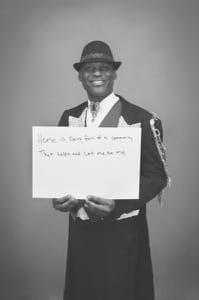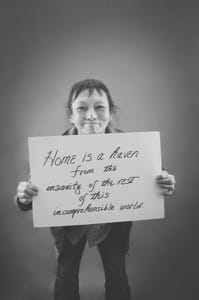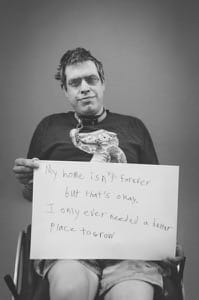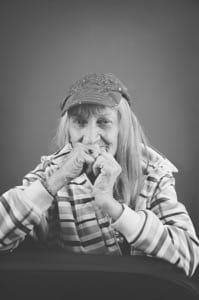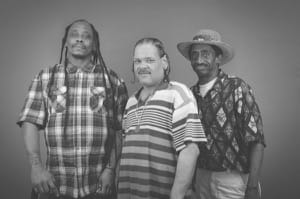Delivering Innovation in Supportive Housing, or DISH, provides high-quality, permanent housing to 450 formerly homeless San Franciscans who suffer from serious health issues. Audra Miller ’14 is in her second year as a volunteer with DISH through Mennonite Voluntary Service.
When Elizabeth Gjelten from Cal Shakes, the California Shakespeare Theater, set out to develop a project that would create “more beauty and creativity” in the lives of DISH residents, she began to see that isolation and lack of community were real needs.
“After years on the streets,” she wrote on the Cal Shakes website, “[many people] lack the most basic tools needed to live side-by-side with neighbors. This is DISH’s challenge: not only to maintain safe, decent housing and give tenants the support they need to stay there, but also to help them rebuild their lives and build community.
“Sometimes the first step in rebuilding your life is to value it,” Gjelten went on. “A beautiful, professional portrait can be a powerful tool to say to yourself and to anyone else who looks at it: ‘This is who I am, what I’m worth.’
“When I learned that a DISH intern, Audra Miller, is a skilled photographer, it seemed obvious: Why not create a portrait gallery of willing tenants at the DISH hotels? And why not strengthen the message of these photographs with the tenants’ own words?”
So the “Home Is” Portrait Project was born.
“Multiple photo sessions were set up at each of the six DISH buildings, to take black-and-white portraits of any tenants who were interested,” Audra says. “A writing workshop was also included so tenants could write what it means to have a home or what home means to them.
“Prints of each portrait were given to the tenants so they could share them with friends or family members, some of whom they haven’t seen in 20+ years. Large prints of each portrait were put on display in the lobby of each building, giving tenants a sense of pride to see their own portrait and the portraits of their neighbors adorning the walls of their home.”
The portraits will eventually be framed in groups, to go in each of the buildings’ community rooms. And DISH administrators are already talking about how they can use the photos to convey their work and mission to a wider audience.
“While it’s great to see the excitement these portraits have created among the DISH tenants, there are plans to share these stories with a larger community,” Audra says. “These portraits can give a face to the people who live in San Francisco’s most impoverished neighborhood, the Tenderloin.
“Plans for an exhibit in the San Francisco Public Library and in the Twitter building are in the works, and there’s the possibility for a book of all of the portraits. So far, 130 portraits have been taken and the project is still growing.”
